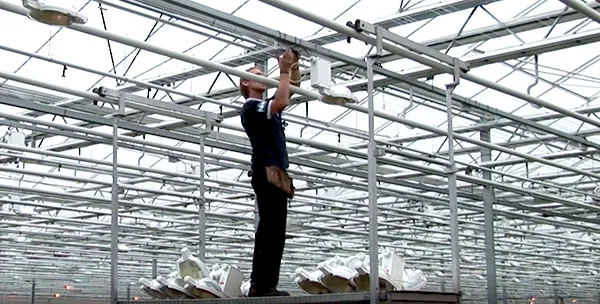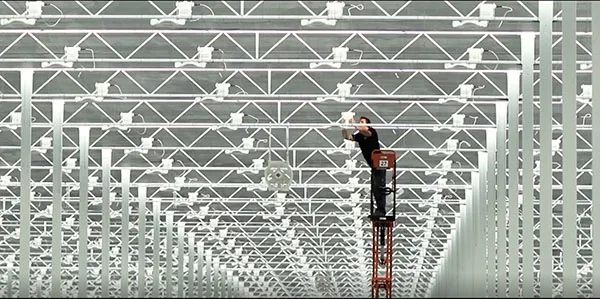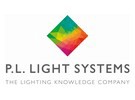The commercial greenhouse industry has seen significant innovation over the past few years. The greenhouse of today looks remarkably different to those that were considered to be at the cutting edge of design just a decade ago.
The most significant innovations have been in greenhouse technologies—driven by increasing energy and labour costs. Growers have realized the advantages of investing in equipment and automated systems that will reduce their operating costs (including labour, maintenance and energy-related costs) and increase their bottom line.
Regular maintenance
As such, energy-efficient supplemental lighting systems are a logical investment for most greenhouse operators, but they often don’t realize that, just like any equipment, luminaires need to be regularly maintained in order to ensure optimal performance.
When was the last time you checked the output of your lamps? Since light output depreciates over time, regular replacement of lamps is a critical component to maintaining the optimal performance of HID luminaires, and yet many growers do not include re-lamping as part of their regular maintenance strategy.
When it comes to light intensity, the rule of thumb is that every 1% increase in PAR light, results in 1% more photosynthesis, crop growth and yield. However, the opposite is also true: every 1% loss of light can mean a 1% loss in plant growth and this can have a significant impact on your crop and yield, so don’t wait for your lamps to fail before replacing them.

HPS lamps
For high pressure sodium lamps, replacement is recommended after 10,000 hours of operation. Some lamp failure may occur before this recommended interval and single lamp replacement should be considered where necessary. Metal Halide lamps depreciate in output much quicker than HPS lamps – group re-lamping is typically recommended after 8,000 hours of operation.
We typically recommend greenhouse growers begin thinking about re-lamping over the spring and early summer months, so they can order the lamps and have them installed before the fall when they will be turning their luminaires back on again. Given that high-quality double-ended lamps are not inexpensive―replacing all the lamps in a facility at the same time could prove to be a pretty costly exercise. For this reason, we also coach growers on how to plan a well thought out re-lamping schedule, to spread the financial impact while ensuring optimal light intensity is maintained.
Cleaning the reflectors
Summer is also a great time to clean the reflectors on luminaires to ensure they continue to deliver optimum performance. You may not realize it, but it’s estimated that light output can be reduced up to 10% due to dirt, dust and buildup on a reflector. If not properly cleaned and maintained, this can mean a loss of quality in your crop, longer crop cycles and reduced yield.
To maintain the highest level of performance for your luminaires, we recommend that you check and clean your reflectors every year if possible. Ideally this should be part of your cyclical maintenance routine and is as easy as removing the reflectors and/or luminaires and washing them in a simple water and vinegar solution. For more information on maintaining your luminaires check out the P.L. Light Systems maintenance guide.

P.L. Light Systems customers can also take advantage of the LightCare photometric diagnostic service, in line with their long-term lighting system maintenance strategy. As part of this service, customers can submit samples of their lamps and/or reflectors for testing in our photometry lab. The customer will then receive a full test report of the findings—along with recommendations on what can be done to extend the life of the current reflectors and/or lamps or, alternatively, a recommendation that the relevant components need to be replaced in order to achieve optimal light quality.
To find out more about what you can do to optimize the performance of your lighting system, or to discuss your re-lamping needs, you can contact your local P.L. Light Systems regional sales manager.
For more information: P.L. Light Systems
P.L. Light Systems
1.800.263.0213
info@pllight.com
www.pllight.com
